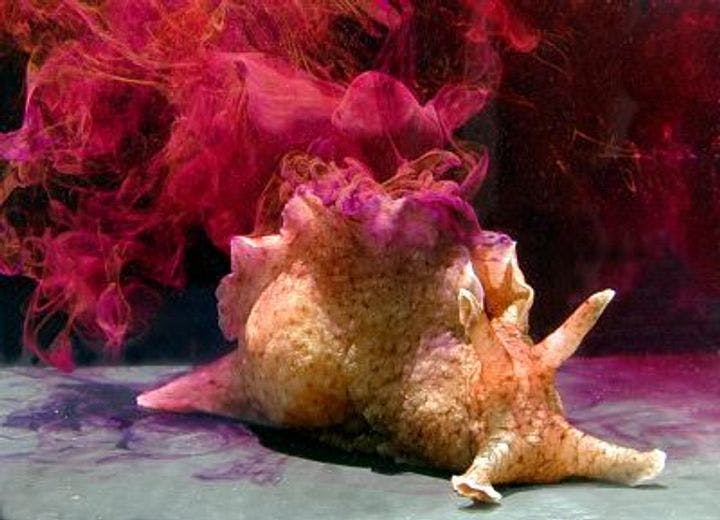Winter 2011
School for Slugs
– The Wilson Quarterly
How something as simple as a slug can help us understand ourselves.
When neuroscientist Eric Kandel gave his acceptance speech after winning the Nobel Prize in Physiology or Medicine in 2000, he puckishly flashed a Photoshopped picture of a giant undersea slug sporting a Nobel medal on the screen behind him.
Aplysia californica is not just any old slug, but “the creature upon which much of the modern scientific understanding of learning has been built,” writes D. Graham Burnett, a Princeton historian and an editor of Cabinet.
The first half of the 20th century saw halting progress in the quest to understand what exactly learning is. German psychologist Hermann Ebbinghaus identified the “learning curve,” and Russian physiologist Ivan Pavlov famously trained animals to respond to certain stimuli in what he called “classical conditioning.” But when it came to describing how learning actually happens, scientists were stymied. Psychologist Karl Lashley joked in 1950, “I sometimes feel, in reviewing the evidence, . . . that the necessary conclusion is that learning is just not possible.”
The study of what are called “model organisms” has produced many core scientific discoveries. Where would genetics be without fruit flies? In the early 1960s, Kandel was looking for the model organism for the science of learning. Dogs and rats were too complicated, their behavior too intricate. He “wanted to study learning in an animal built for the very simplest kinds of information acquisition and storage,” Burnett says. “An animal that could be understood as a little laboratory learning-machine: limited behavioral repertoire; large, simple wiring; a resilient metabolism; and, ideally, small teeth (no one likes getting chomped by lab animals).”
Enter Aplysia californica, a large slug that lives in the kelp forests and rocky reefs off the Pacific coast of the United States. An individual specimen can weigh more than 10 pounds. The slugs’ skin is translucent, allowing them to turn the color of the kelp they eat and hide from predators. “When scrunched up contentedly, they look a bit like rabbits,” Burnett notes. A. californica conveniently has huge neurons, and relatively few of them to boot (about 20,000, whereas mammals can have upward of 100 million). Equally convenient, the slugs “have organized their ‘brain’ into half a dozen little brainlets called ‘ganglia’ which are located in some proximity to the parts of the body they control.”
But could they learn? In the 1960s and 70s, Kandel and his colleagues showed that if you had patience, a Waterpik, and a cattle prod, you could “train” the slugs. They could get used to stimuli that were harmless, and, notably, they could be classically conditioned, meaning they could learn to associate one stimulus with another. Eerily, they still behaved the same way with “their intact brainlets carefully removed from their bodies and laid on a sheet of glass, . . . provided one didn't sever the various nerves that wired them up,” Burnett says. Learning, Kandel and his colleagues discovered, happens through what scientists call “synaptic plasticity”—changes that occur in the connection between two neurons in response to stimuli.
Of course, that’s putting it simply, but, like the slugs, sometimes simple things can help us understand something much more complicated.
* * *
The Source: "Learning Degree Zero" by D. Graham Burnett in Cabinet, Fall 2010.
Photo courtesy of Wikimedia Commons
